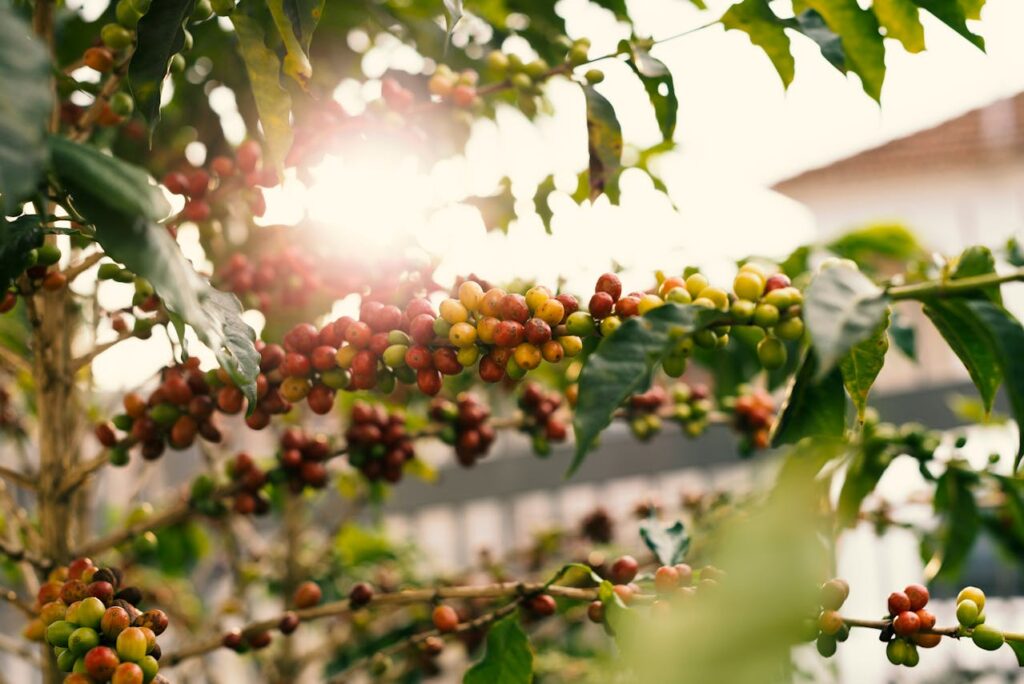Introduction to Arabica Coffee Plant
Arabica coffee, scientifically known as Coffea arabica, is one of the most popular species of coffee plants globally. Renowned for its rich flavor and aromatic profile, Arabica coffee plays a significant role in the coffee industry. Let’s delve deeper into the world of Arabica coffee plants.
Origin and History
Arabica coffee is believed to have originated from the highlands of Ethiopia, where it was first cultivated over a thousand years ago. Over time, it spread to other regions of Africa and eventually reached the Arabian Peninsula, where it gained prominence. Today, Arabica coffee is cultivated in various coffee-growing regions worldwide.

Characteristics of Arabica Coffee Plants
Growth Habits
Arabica coffee plants are characterized by their tall stature, reaching heights of up to 5 meters in optimal conditions. They have a more delicate and shallow root system compared to other coffee species.
Leaf Structure
The leaves of Arabica coffee plants are glossy and dark green, with prominent veins running through them. They are typically elliptical or ovate in shape and arranged alternately along the branches.
Flowering and Fruit Development
Arabica coffee plants produce small, white, fragrant flowers that bloom in clusters. After pollination, these flowers give rise to green berries, which gradually ripen into cherry-like fruits. Each fruit typically contains two flat-sided seeds, which we commonly refer to as coffee beans.
Cultivation of Arabica Coffee Plants
Arabica coffee plants thrive in subtropical climates with well-defined wet and dry seasons. They prefer altitudes ranging from 600 to 2000 meters above sea level and require ample rainfall for optimal growth.
Climate Requirements
Arabica coffee plants prefer temperatures between 15°C to 24°C, with humidity levels between 60% to 70%. Frost can be detrimental to their growth, making them unsuitable for cultivation in frost-prone areas.
Soil Preferences
These plants prefer well-drained, fertile soil with a slightly acidic to neutral pH. They are sensitive to waterlogging and do best in soils rich in organic matter.
Propagation Methods
Arabica coffee plants are primarily propagated through seeds or cuttings. Seed propagation is more common, although it takes longer for the plants to reach maturity compared to those propagated from cuttings.
Harvesting and Processing
Ripening and Harvesting
 rabica coffee cherries typically take 9 to 11 months to ripen fully. Harvesting is usually done by hand-selecting ripe cherries, as they do not ripen uniformly on the plant.
rabica coffee cherries typically take 9 to 11 months to ripen fully. Harvesting is usually done by hand-selecting ripe cherries, as they do not ripen uniformly on the plant.
-prone areas.
Processing Methods
After harvesting, the cherries undergo processing to extract the coffee beans. This can be done using either the dry or wet method, with each method influencing the flavor profile of the final product.
Varieties of Arabica Coffee
Arabica coffee encompasses a wide range of cultivars, each with its unique flavor characteristics and growth requirements. Some popular varieties include Typica, Bourbon, Geisha, and SL28.
Importance of Arabica Coffee in the Coffee Industry
Arabica coffee accounts for the majority of coffee production worldwide and is highly valued for its superior quality and nuanced flavors. It plays a crucial role in specialty coffee markets and is often favored by coffee enthusiasts for its complex taste profiles.
Challenges in Arabica Coffee Cultivation
Arabica coffee cultivation faces various challenges, including climate change, pests, and diseases. Climate variability can affect yields and quality, while pests such as the coffee berry borer pose a significant threat to crops.
Environmental Impact and Sustainability
The coffee industry is increasingly focusing on sustainable practices to mitigate its environmental impact. Initiatives such as shade-grown coffee and organic farming promote biodiversity and soil health while reducing the reliance on synthetic inputs.
Health Benefits of Arabica Coffee
Moderate consumption of Arabica coffee has been associated with several health benefits, including improved cognitive function, enhanced metabolism, and a reduced risk of certain diseases such as Parkinson’s and Alzheimer’s.
Cultural Significance
Arabica coffee holds significant cultural importance in many regions, where coffee rituals and ceremonies are deeply ingrained in social customs. It serves as a symbol of hospitality and camaraderie in communities worldwide.
Future Prospects
Despite facing challenges, the future of Arabica coffee cultivation remains promising. Continued research and innovation in agronomy and genetics hold the key to overcoming obstacles and ensuring the sustainability of coffee production for future generations.
FAQs
Is Arabica coffee better than Robusta?
Arabica coffee is generally considered superior to Robusta due to its smoother flavor and lower caffeine content.
How long does it take for Arabica coffee plants to bear fruit?
Arabica coffee plants typically start producing fruit within three to five years of planting, with full production reached by the fifth to seventh year.
What is the ideal altitude for growing Arabica coffee?
Arabica coffee thrives at altitudes between 600 to 2000 meters above sea level, where cooler temperatures and adequate rainfall support optimal growth.
Can Arabica coffee be grown indoors?
While Arabica coffee plants prefer outdoor cultivation in subtropical climates, they can be grown indoors in containers under suitable conditions, such as adequate sunlight and humidity.
How should Arabica coffee be stored to maintain freshness?
Arabica coffee beans should be stored in a cool, dark place in an airtight container to preserve their freshness and flavor for an extended period.
